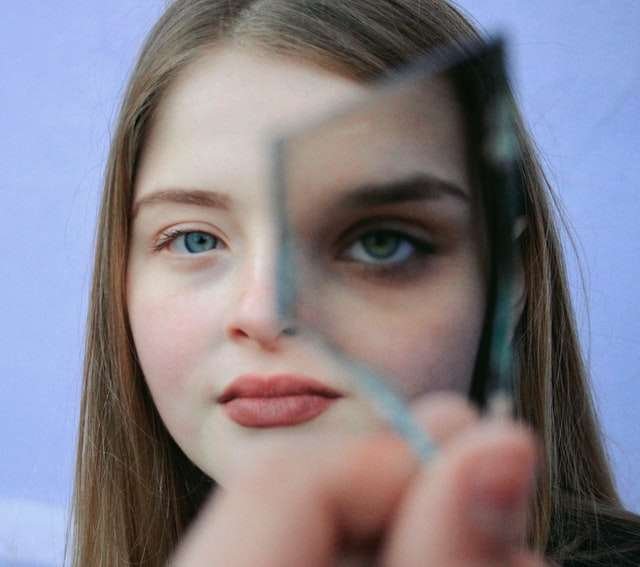Many INTJ personality types exhibit extreme and intense personas, manifesting into a facial expression known as the “Death Stare.” Although the death stare may be attributed to the mental intensity of INTJs, it also can be used strategically to gain leverage and influence over others.
Jaceris (2016) said, “Death glare is also common as an INTJ way of showing some resistance. Sometimes it happens in a workplace or in serious meetings where INTJs won’t always face an unfriendly work environment. They will remain silent to avoid possible conflicts. INTJs will let the world burn and wait until someone asks for their help. People will probably notice the death stare after trying to confront an INTJ in an attempt to intimidate h(im/er) into doing something that others need” (para. 5).
In other stances, INTJs are thinking intensely about a problem to be solved.
Storm (2018) posited that “INTJ personalities are often called the ultimate big-picture thinkers. They are always trying to figure out the core meaning of life and the background purpose behind everything. They don’t like simple things; they like complex things. They are disappointed if a theory, idea, or possibility seems too simple. They like perspectives and theories that they can sink themselves into and analyze from a hundred different perspectives” (para. 4).
This level of intensity makes people uncomfortable.
Walker (2017) offered that “INTJs get asked “why so serious?” in one form or another by concerned or intimidated colleagues and family members. If you see someone who seems to have a perma-scowl as their default facial expression, they are probably an INTJ. In most cases, the INTJ’s appearance of displeasure is nothing more than their “thinking face.” You may spot them staring off in some direction during which they are probably just immersed in deep mental processing. If they are unaware they are being watched, you may even catch them silently mouthing words as though they were pantomiming a discussion with themselves” (para. 5).
Like any personality trait, a look or stare could mean a myriad of things.
So, why the concern about an INTJ’s death stare?
It’s one thing to dismiss introverts because of their aloofness and nonchalance; it’s another to become enamored by what lurks behind their expressions.
What’s in an INTJ’s death stare?
Suffice to say that an INTJ’s death stare is mysterious.
And mystery breeds fear, as well as curiosity.
Self-aware INTJs may be cognizant of what they are doing when they exhibit a tense or extreme appearance.
Because they are always “on,” there is rarely a moment when they aren’t thinking about something. As Storm and Walker outlined, INTJs’ arresting face generally means they are thinking about something of extreme interest.
However, it would be difficult to conclude that they are merely thinking and unaware of the impression their face may be exhibiting.
The difficulty rides on the fact that INTJs, like many introverts, are keen observers of their environment.
Based on some early childhood experiences of bullying and disempowerment, the outside world can be an uncomfortable place to exist.
Consequently, some nervous energy might exist that consistently pervades the psyche of INTJs.
As Jaceris noted, INTJs remain silent to avoid conflicts. However, their moral code of “Live and let live” may drive some INTJs to be on guard for potential danger.
If a domineering world exists where the strong prey upon the weak, an INTJ’s death stare may be gearing up for what might be viewed as an inevitable war.
Predators may view quiet energy as a weakness.
In this vein, nothing is inevitable, but INTJs exaggerate potential danger solely based on their imagination.
Highly evolved INTJs have learned how to become predators based on their experience of being preyed upon.
The death stare accomplishes this goal to give off energy that they aren’t to be bothered. The other party has to initiate any volatile actions before an INTJ responds.
In many instances, the death stare is a warning. Beneath the warning, a scared individual may exist who uses draconian tactics as a response to the encroachment by others.
Using the death stare to leverage influence
If the INTJ’s death stare is mysterious, this bodes well with the ability to gain and leverage influence.
Such skills must be handled adroitly.
Traditionally, staring was seen as inappropriate and an act of aggression.
To stare intently at a stranger represented a transgression that might be met with retaliation.
There are a few ways to use the death stare to gain and leverage influence.
Intense focus represents communicative engagement.
When listening becomes a physical and emotional immersion into the communication process, it is said to be “active.”
Because many people rarely listen actively, an INTJ’s stare could be a communication tool for engagement. When people feel that someone is interested in their point of view, it engenders a sense of exhilaration.
INTJs are interested in how and why things work, so listening to someone share an enlightening experience is mutually beneficial.
The more engaged a person feels, the more relevant and open they are to new or innovative ideas. Such experiences allow INTJs to test and share their ideas within the communication process.
INTJs’ death stare wards off danger.
In many communities, how a person walks and talks determines his level of vulnerability.
Consequently, INTJs’ death stare alerts potential predators that they are not easy targets. Predators fear the unknown and are less inclined to engage in conflicts where the outcome is indeterminate.
Direct eye contact speaks volumes without one word ever being uttered, which influences the other party to consider other options than attacking.
High situational awareness of an environment also serves as a means of survival.
They are gaining power through mystery.
In the movie “American Gangster,” Frank Lucas, played by Denzel Washington, says, “The loudest one in the room is the weakest one in the room.”
This profundity contradicts the notion that being the life of the party is an ideal role.
An INTJ’s death stare and quietness represent an engaging, charismatic presence.
People who don’t seek the need to be noticed can be alluring.
And when people are intrigued, they willingly expose themselves by sharing energy, thoughts, and interests without being asked to do so.
This is power at its finest—the ability to engage and mesmerize others through one’s mere presence.
It is logical to conclude that an INTJ’s death stare is a result of extreme concentration, as well as conflict avoidance.
However, an INTJ’s high intelligence and self-awareness may lead many to believe that their death stare is premeditated.
After all, INTJs are superior problem solvers, and cultivating desired outcomes is part of their DNA.
It would be naïve of us to believe that an INTJ’s facial expressions are not part of an overall strategic plan. They are too smart to leave anything to chance.
The next time you witness an INTJ’s death stare, know that there is much more than meets the eye.
Rarely are their actions by happenstance. And it would help if you never took them for granted.
—Paul Milton

References
Jaceris, M. (2016, Nov. 19). INTJ death stare meaning. INTJ Vision. Retrieved from: https://bit.ly/3BtaKQW.
Lucas, F. (n.d.). American gangster. Goodreads. Retrieved from: https://bit.ly/3Q85Ixi.
Storm, S. (2018, Oct. 3). Here’s why INFJs and INTJs seem “Intense.” Psychology Junkie. Retrieved from: https://bit.ly/3PQ9SKo.
Walker, J. (2017, Aug. 11). 4 tips how to identify an INTJ in public. Thought Catalog. Retrieved from: https://bit.ly/3ORlo6U


